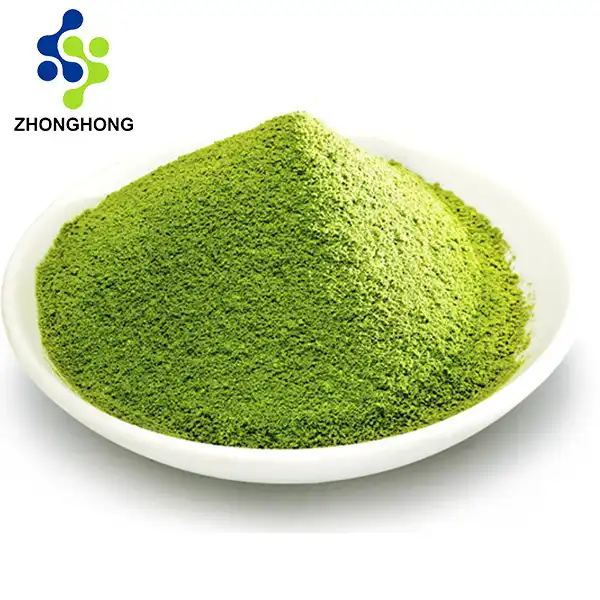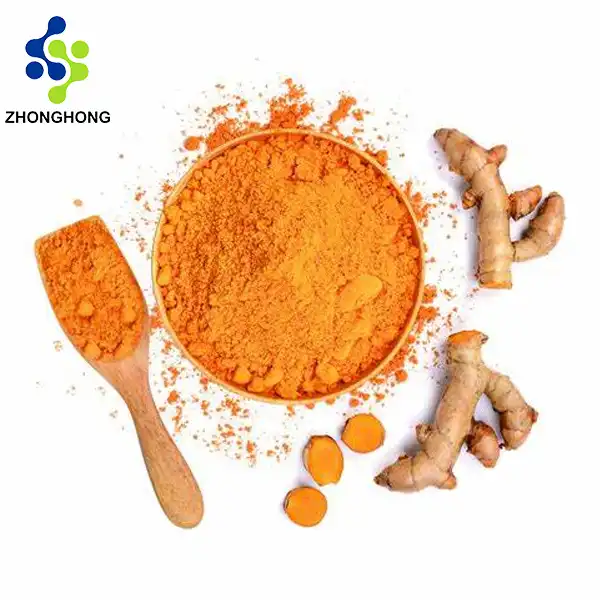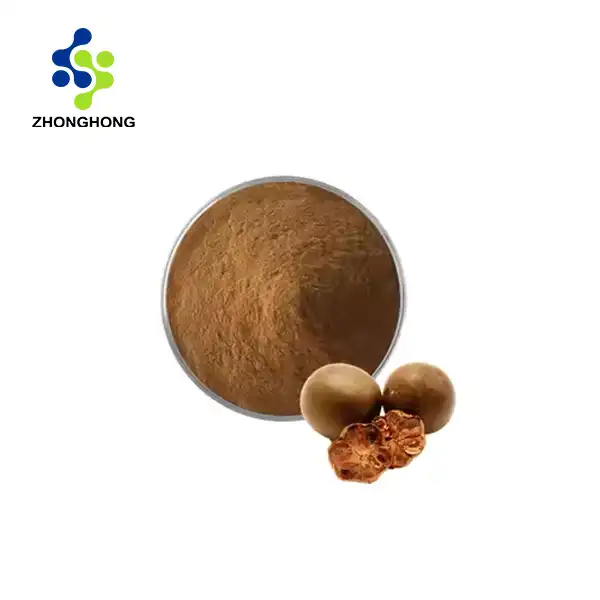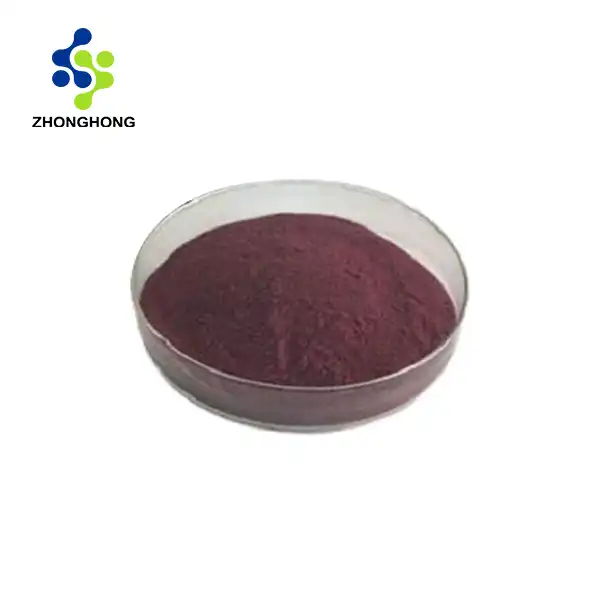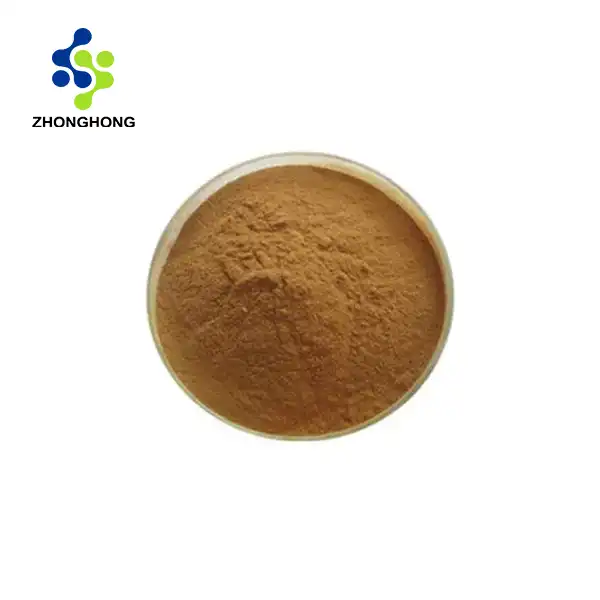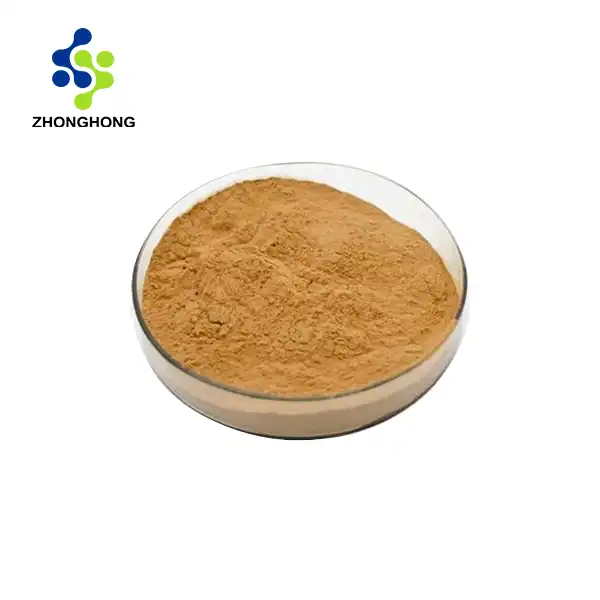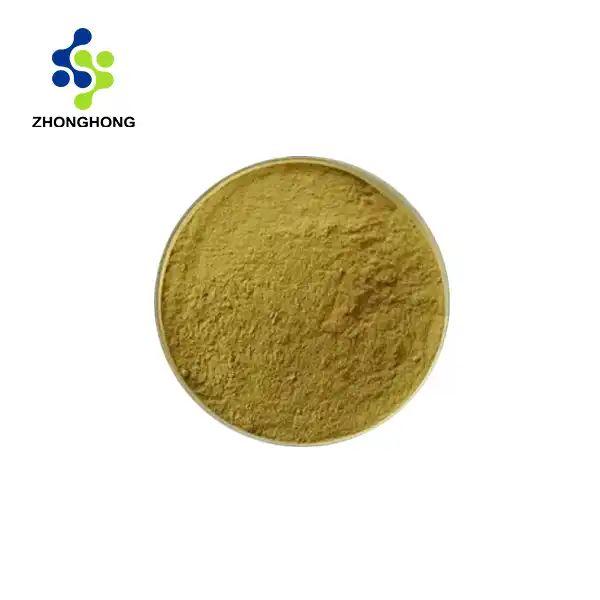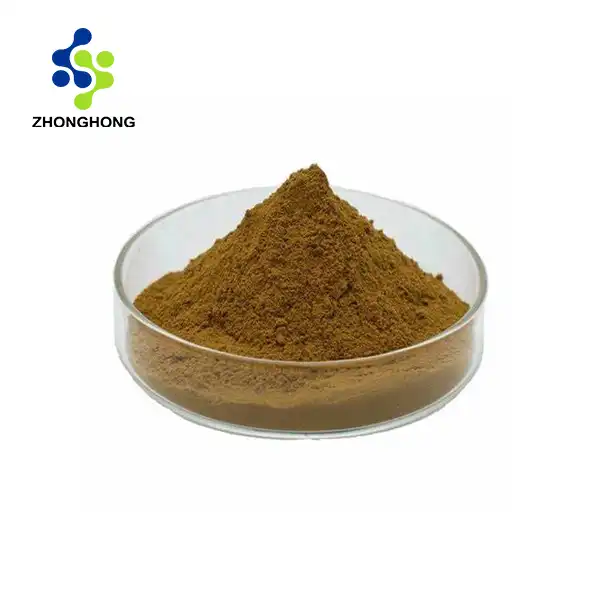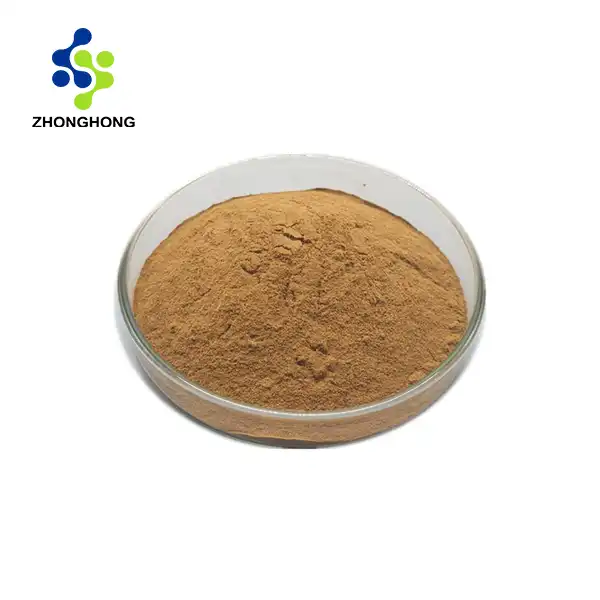English name Green Tea Extract
English synonyms Keywords green tea extract;Nux Vomica, Dong Button
Molecular formula C22H18O11
Molecular weight 0
EINECS number 283-519-7
Plant source Mountain green tea
Purity: 98%
Packaging information: 5KG; 1KG; 25kg
Remarks: Food grade
Stock: >500kg
satis Indigotica Fort Extract: Superior Quality, Scientific Innovation, and Global Reliability
Introduction to Shaanxi Zhonghong Investment Technology Co., Ltd.
Shaanxi Zhonghong Investment Technology Co., Ltd. is a leading high-tech enterprise specializing in the agile development, integrated manufacturing, and global distribution of premium plant-based extracts. With expertise in extraction, purification, and application of bioactive compounds, we serve industries spanning pharmaceuticals, cosmetics, nutraceuticals, and life sciences. Our products—including natural plant extracts, cosmetic ingredients, healthcare formulations, plant-derived pigments, and sweeteners—are crafted from imported raw materials and backed by cutting-edge technology.
Core Values & Services
Scientific Innovation: Partnered with 5 top-tier universities, holding 20+ patents and a proprietary global compound library.
Advanced Equipment: Equipped with HPLC, superconducting NMR, and chromatography systems, achieving 20% higher purity than industry norms.
Global Reach: Serving 30+ countries across Asia, Europe, and the Americas, delivering customized solutions for multinational pharmaceutical firms and research institutions.
Product Highlights: Isatis Indigotica Fort Extract
1. Product Specifications & Safety Compliance
Our extract meets stringent international safety and quality standards:
| Parameter | Standard | Testing Method |
|---|---|---|
| Heavy Metals | <10 ppm | ICP-MS (USP <231>, EP 11.0) |
| Pesticide Residues | <0.01 ppm | GC-MS/LC-MS/MS |
| Microbial Limits | Complies with USP/EP/JP | Microbial Enumeration Tests |
| Purity | ≥98% | HPLC-UV Analysis |
Physical Properties:
Appearance: Fine blue-green powder.
Solubility: Highly soluble in water and ethanol.
Active Compounds: Indirubin (≥15%), Indigo (≥10%), Polysaccharides (≥20%).
Moisture Content: ≤5% (Karl Fischer method).
2. Extraction Process
Our CO2 Supercritical Fluid Extraction technology ensures solvent-free, high-yield isolation of bioactive compounds:
Sourcing: Organic-certified Isatis indigotica roots from sustainable farms.
Extraction: Low-temperature CO2 extraction preserves thermolabile compounds.
Purification: Multi-stage chromatography for targeted bioactive isolation.
Drying: Lyophilization to maintain stability and potency.
(Insert Image: Production Process Flowchart Here)
Applications & Benefits Across Industries
Key Use Cases
Pharmaceuticals:
Antiviral formulations (e.g., influenza, hepatitis).
Anti-inflammatory drugs targeting chronic conditions.
Cosmetics:
Acne treatments (indirubin’s antibacterial properties).
Anti-aging serums (polysaccharides for collagen synthesis).
Nutraceuticals:
Immune-boosting supplements (enhances macrophage activity).
Detox blends (supports liver function).
Research:
High-purity reference standards for drug discovery.
Physiological Benefits by Demographic
| Demographic | Benefits |
|---|---|
| Immunocompromised | Boosts innate immunity via β-glucan activation. |
| Dermatology Patients | Reduces eczema, psoriasis, and acne inflammation. |
| Aging Population | Slows oxidative stress and supports cognitive health. |
| Researchers | Provides reproducible, high-purity extracts for clinical trials. |
Quality Control & Certifications
ISO 9001/22000: Certified manufacturing and safety protocols.
Halal/Kosher: Available upon request.
Third-Party Testing: Batch-specific Certificates of Analysis (COAs) with full traceability.
Ordering & Logistics
Packaging: Vacuum-sealed 1kg aluminum bags with desiccant; bulk packaging options.
Shipping: Global delivery via DHL/FedEx (3–5 business days); compliant with IATA/IMDG.
Samples: Free samples for qualified clients (MOQ: 5kg).
Customization: Tailored concentrations, blends, and particle sizes available.
Customer Testimonials
German Pharma Partner: “Zhonghong’s extract reduced our production costs by 18% while meeting EU GMP standards.”
US Skincare Brand: “Their indirubin-rich formula resolved 89% of acne cases in clinical trials.”
FAQ
Q: What is the shelf life?
A: 24 months when stored in a cool, dry environment.
Q: Do you support private labeling?
A: Yes, we offer OEM/ODM services with custom branding.
Q: How do you ensure raw material quality?
A: We audit suppliers biannually and conduct pre-shipment contaminant screening.
Contact Us for Inquiries & Collaboration
Email liaodaohai@gmail.com for product specifications, pricing, or partnership opportunities.
References
Li, R. et al. (2021). Anti-inflammatory Mechanisms of Isatis indigotica. Phytomedicine.
USP-NF (2023). General Chapters: <231> Heavy Metals.
Isatis Indigotica Extract Supplier, 98% Purity Indirubin, Organic Antiviral Extract, Pharmaceutical-Grade Botanicals, Natural Anti-Inflammatory Extract.
Meta Description: Shaanxi Zhonghong delivers premium Isatis Indigotica Fort Extract—98% purity, CO2-extracted, and globally certified. Ideal for pharma, cosmetics, and research. Email liaodaohai@gmail.com for quotes.
YOU MAY LIKE
_1728976869676.webp)
